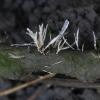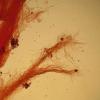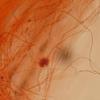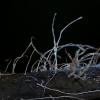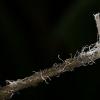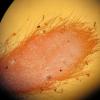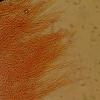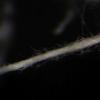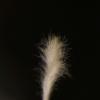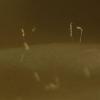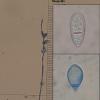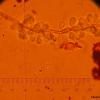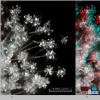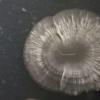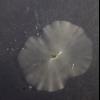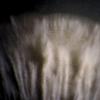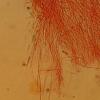
20-12-2025 23:08
Patrice TANCHAUDBonsoir, récolte sur sol sablonneux dans l'arri�

21-12-2025 09:32
Hello.A tiny ascomycete found embedded in wood in

20-12-2025 15:47
Mirek GrycHi.These grew on pine wood that was heavily covere

18-12-2025 21:17
Pol DebaenstThe identification took me to Byssonectria deformi

15-12-2025 07:09
 Danny Newman
Danny Newman
indet. Rutstroemiaceae sp. on unk. fallen leavesMc

19-12-2025 10:10
Patrice TANCHAUDBonjour, récolte réalisée en milieu dunaire, a

18-12-2025 17:23
 Bruno Coué
Bruno Coué
Bonjour,je serais heureux d'avoir votre avis sur c

18-12-2025 18:07
Margot en Geert VullingsThese plumes were found on rotten wood.They strong
Xylaria on dead Rubus stem
Stephen Martin Mifsud,
18-11-2015 09:10
 Hi, I found this Xylaria (-looking) filamentous mushroom which I wish to learn how to identify. A look at the microscope did not reveal obvious signs of reproductive parts, except some budding at the tips (to confirm later). At this stage I just wish to know if it's Xylaria sp. and if it can be identified at this anamorph stage. The filaments were septate and 2-3um wide. I have specimens at home for further investigations. Specimens about 1-2cm high,
Hi, I found this Xylaria (-looking) filamentous mushroom which I wish to learn how to identify. A look at the microscope did not reveal obvious signs of reproductive parts, except some budding at the tips (to confirm later). At this stage I just wish to know if it's Xylaria sp. and if it can be identified at this anamorph stage. The filaments were septate and 2-3um wide. I have specimens at home for further investigations. Specimens about 1-2cm high,
Jacques Fournier,
18-11-2015 21:28

Re : Xylaria on dead Rubus stem
Hi Stephen,
if it's a Xylaria at conidial stage it should yield a white powdery mass of conidia on surface. It cannot be identified safely until the teleomorph occurs. It can take several months to become mature in good conditions, in a wet leaf litter.
Be patient!
Cheers,
Jacques
if it's a Xylaria at conidial stage it should yield a white powdery mass of conidia on surface. It cannot be identified safely until the teleomorph occurs. It can take several months to become mature in good conditions, in a wet leaf litter.
Be patient!
Cheers,
Jacques
Stephen Martin Mifsud,
18-11-2015 21:50

Re : Xylaria on dead Rubus stem
This was found in a deep valley which I do not think that I will revisit. However I carried the Rubus twig with me to home. Not sure if I did well, but at present it is in a closed box sitting on a moist tissue paper with the Xylaria facing up at room temperature, During the travel, they went a bit dry already, so hope they are alive. They are still in the vegetative state because I saw no conidia/spores under the microscope but just a network of fine hyphae. I never tried to ID a Xylaria and eager to learn if this specimen remains good.
Many thanks Jacques.
Many thanks Jacques.
Jacques Fournier,
19-11-2015 16:06

Re : Xylaria on dead Rubus stem
the filamentous structure which gives this feathery aspect on your macro picture is not at all typical of Xylaria. It might turn out to be rather a synnematous hyphomycete or whatever. You will tell us when it makes conidia.
Cheers,
Jacques
Cheers,
Jacques
Peter Püwert,
19-11-2015 21:16
Re : Xylaria on dead Rubus stem
Hi,
I have this thing often, first of all if Rubus-twigs are longer in the damp chamber or outside on lying twigs with bigger humidity and bright conclusion. In my opinion any Hyphen.
Regards
Peter.
I have this thing often, first of all if Rubus-twigs are longer in the damp chamber or outside on lying twigs with bigger humidity and bright conclusion. In my opinion any Hyphen.
Regards
Peter.
Stephen Martin Mifsud,
20-11-2015 05:41

Re : Xylaria on dead Rubus stem
Unf., I have not understood your comment. Could yuo please write again in your own language and then I try and translate myself. The Rubus twig are now in a humid chamber lept inside.
Peter Püwert,
20-11-2015 14:43
Re : Xylaria on dead Rubus stem
Hi Stephen,
this was the translation with the "online translator" without to check up, the translation back was a great gibberish. Here my own attempt:
This phenomenon I have seen frequently at dead Rubus twigs, when these longer lay on humid places, mostly without light. In my opinion are these unknown hyphoid elements.
Greetings
Peter.
this was the translation with the "online translator" without to check up, the translation back was a great gibberish. Here my own attempt:
This phenomenon I have seen frequently at dead Rubus twigs, when these longer lay on humid places, mostly without light. In my opinion are these unknown hyphoid elements.
Greetings
Peter.
Stephen Martin Mifsud,
20-11-2015 19:44

Re : Xylaria on dead Rubus stem
Thanks Peter, I think that's better ;-)
If I am understanding well, you are indicating that these hyphal growths are often seen on Rubus twigs located in very damp areas with low light conditions. Actually, I found these specimens exactly as you are stating. What's interesting is that you said they are unknown hyphal masses?!? Has nobody studied them to shed light what they are?
If I am understanding well, you are indicating that these hyphal growths are often seen on Rubus twigs located in very damp areas with low light conditions. Actually, I found these specimens exactly as you are stating. What's interesting is that you said they are unknown hyphal masses?!? Has nobody studied them to shed light what they are?
Joey JTan,
20-11-2015 22:11
Re : Xylaria on dead Rubus stem
Have you checked for clamp connections?
Stephen Martin Mifsud,
22-11-2015 19:16
Stephen Martin Mifsud,
09-12-2015 18:12

Re : Xylaria on dead Rubus stem
Hi, here are some new photos after the Rubus twig was left in a humid chamber, almost after a month. There was proliferation of new hyphal masses, but I could not detect any specialise reproductive structures. From what I can deduct, a hyphal bud grows out of the stem, elongated and take a narrow, air-filled, cyclindrical structure made of interwoven (cottony) hyphae about 1um thick. This grows erect initially then become flaccid and distends down. At the end it turns pale yellow-beige and as if its the end of its cycle?
Maybe I need to wait some more weeks, but there are no conidia around. The fungus is currently being accompanied by at least one other asco, a type of white-brushed Penicillium with small stipes.
Maybe I need to wait some more weeks, but there are no conidia around. The fungus is currently being accompanied by at least one other asco, a type of white-brushed Penicillium with small stipes.
Stephen Martin Mifsud,
14-01-2016 21:59

Re : Xylaria on dead Rubus stem
Hi, probably last update. Now 3 months passed and the filamentous fungus is still alive on the dead Rubus twig in a moisture chamber kept indoors. Old hyphal ropes shrivel, turn cream, and becomes prostrate and lifeless. New ones are still being formed, but on a much lower rate now. Some active hyphal ropes run horizontally on the soaked tissue paper and their terminal end expands laterally but no spore formation.
Adjacent to these ropes, there was a fine network of another(?) filamentous microfungus which produced a simple conidiophore with verticillate bunches of balloon shaped conidiaspores. The conidiospores are about 25um and with a single septum, not perfectly central. I have a slight hope that these spore-bearing bodies are the sexual counterpart of the xylaria-like fungus.
Any suggestions or comments please?
More photos attached.
Adjacent to these ropes, there was a fine network of another(?) filamentous microfungus which produced a simple conidiophore with verticillate bunches of balloon shaped conidiaspores. The conidiospores are about 25um and with a single septum, not perfectly central. I have a slight hope that these spore-bearing bodies are the sexual counterpart of the xylaria-like fungus.
Any suggestions or comments please?
More photos attached.
Stephen Martin Mifsud,
14-01-2016 22:02

Re : Xylaria on dead Rubus stem
The spores did not retain well the congo red stain but stained readily in Cotton Blue.
Guy Marson,
15-01-2016 08:38
Re : Xylaria on dead Rubus stem
Hi Stephen,
IMHO, no chance for your whatever fungus on Rubus. The thing you illustrated is the Arthrobotrys stage (see pic below) of a nasty little Orbilia coming up there. Just give it a few more weeks, under the same conditions and you may post the apothecia of the Orbilia :-).
Cheers,
Guy
IMHO, no chance for your whatever fungus on Rubus. The thing you illustrated is the Arthrobotrys stage (see pic below) of a nasty little Orbilia coming up there. Just give it a few more weeks, under the same conditions and you may post the apothecia of the Orbilia :-).
Cheers,
Guy
Stephen Martin Mifsud,
15-01-2016 21:45

Re : Xylaria on dead Rubus stem
Hi Guy, thanks for your tip. Indeed it is Arthrobotrys oligospora, and a secondary different species from the original posted 'fungus'. I can't immagine how a nematophage ended in the moisture chamber??! Probably spores were on the Rubus stem and now they germinated. They grow best on the soaked tissue. It is also more weird that this it is a 'stage' of a cup mushroom - Orbilia!
I guess there's no hope of the Xylaria-like fungus which I can't understand what exactly it is, but definitely a living organism! They just grow vegetatively without sporulating or any signs of reproduction. I can stil lsee few specimens growing out, but probably the last ones. I have now transferred few pieces of the nicknamed rope-fungys on agar to see what happens. Hope no contamination from Arthrobotrys on my petri dishes.
Thanks for replying
I guess there's no hope of the Xylaria-like fungus which I can't understand what exactly it is, but definitely a living organism! They just grow vegetatively without sporulating or any signs of reproduction. I can stil lsee few specimens growing out, but probably the last ones. I have now transferred few pieces of the nicknamed rope-fungys on agar to see what happens. Hope no contamination from Arthrobotrys on my petri dishes.
Thanks for replying
Stephen Martin Mifsud,
01-02-2016 10:10

Re : Xylaria on dead Rubus stem
Update: I have managed cultured this filamentous fungus on Orange Agar and Czapek Dox Agar (modified). Colonies grew slowly, very ropy and in radial fasciles, forming radial white masses with inticated dense hypha. Unfortunately there was no sporulation? How can I trigger this fungus to sporulate? I have now innoculated on Potato Dextrose Agar and Malt Extract Agar - hope they survive. I placed the old plat at 34C maybe they need heat.

